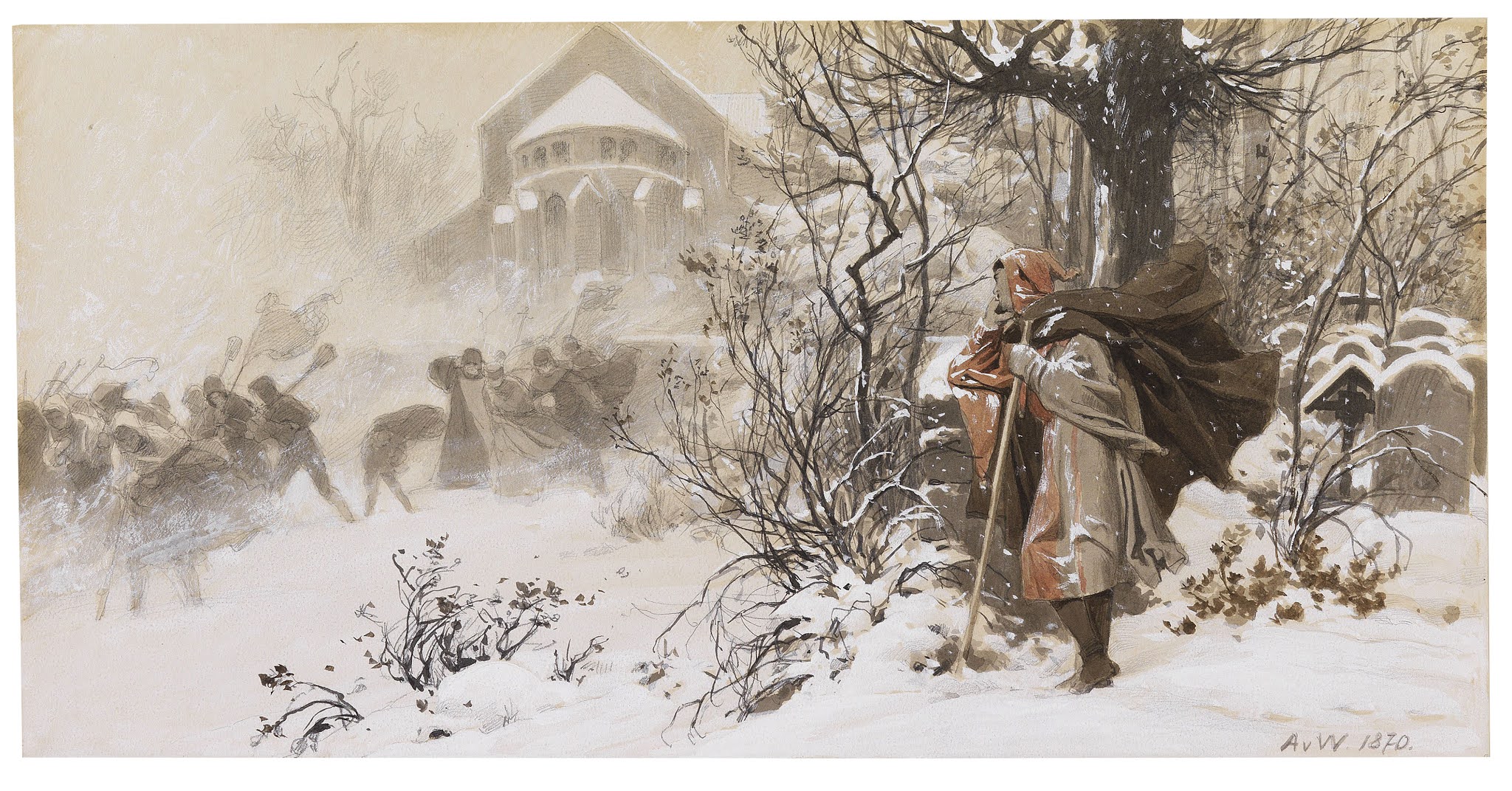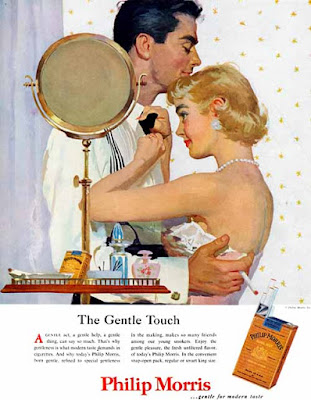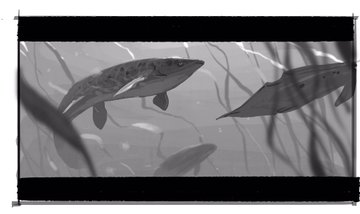Monday, November 30, 2020
Do You See the Face?
Sunday, November 29, 2020
John Wesley Jarvis, Portrait Factory
With studios based in New York and Baltimore, "he received six sitters a day at his painting room and limited each sitting to one hour. In that time he was able to do the face. Then the portrait was handed over to an assistant who painted in the background and the drapery,"
Quote is from a book called Hawkers and Walkers in Early America: Strolling Peddlers, Preachers, Lawyers, Doctors, Players, and Others, From the Beginning to the Civil War, 1927.
John Wesley Jarvis on Wikipedia
Saturday, November 28, 2020
Theatrical Backdrop
Theatrical backdrops were painted at a large scale to provide the atmosphere and setting behind the actors and props on the stage. Some were impressive works in their own right.
This backdrop was painted by the Brückner Brothers Workshop for The Winter's Tale) in 1870. It is 7.4 x 12.8 meters (24.2 x 42 feet).Friday, November 27, 2020
Fan Ho's Bounded Light
One way to capture light is to surround it with darkness.
The light enters the dark space and casts shadows from each of the forms.
The key figure appears backlit in the central region of light.
If you follow around the outside border, it's almost all in deep shadow.
The charcoal fires and cigarette smoke made for bad air quality, but it was a gift to photographers.
When he introduces color into this scheme, it's a revelation.
Books:
Magnum Contact SheetsThursday, November 26, 2020
Birthday Pageant Reference
I recruited my wife, my sons, and some neighborhood girls, and we staged a procession in the backyard, with a borrowed foam dinosaur built by a guy at the hardware store.
Birthday Pageant print is now available in our webstore.
Wednesday, November 25, 2020
Warm Snowscape by A.von Werner

Tuesday, November 24, 2020
Macaroni Style
In 18th century England, aristocratic young men who traveled to Europe often returned with a fancy foreign style and an affected way of speaking, dining, and wearing clothes.
The Continental fashions of the day often included tall wigs, frilly cuffs, and colorful fabrics, which struck commentators as effeminate or foppish.
This style came to be known pejoratively as "macaroni," the term based on the Italian pasta.
Oxford Magazine in 1770 made fun of macaroni style: "There is indeed a kind of animal, neither male nor female, a thing of the neuter gender, lately started up among us. It is called a macaroni. It talks without meaning, it smiles without pleasantry, it eats without appetite, it rides without exercise, it wenches without passion."
Americans recognize the term from the song Yankee Doodle, which was originally sung by British soldiers during the Revolution to make fun of Americans. "Yankee Doodle went to town, A-Riding on a pony, Stuck a feather in his cap, And called it macaroni."
Wikipedia on Macaroni Style
Monday, November 23, 2020
Joe Bowler Visits Art School
When Joe Bowler (1928-2016) was just starting out as an illustrator he got a job as an apprentice for the legendary Cooper Studios in New York.
But he wanted to do more than just cut mats and wash out brushes for the master illustrators. He hoped to prove himself as a full-fledged artist.
So he hung out in the bullpen to watch how master illustrators like Coby Whitmore produced their paintings.
It was a revelation for Bowler to watch the way Coby Whitmore painted. Bowler said that Coby "would paint an illustration from beginning to end in about forty-five minutes, talking the whole time and I'd be watching every stroke, every mixture of paint just watching him work. Every color he put down on his palette, the way he applied the paint. That was my education really."
Still in his early twenties, Bowler was getting a practical education from the best painters in the business.
But he thought he should enroll in art school to get a better grounding. So he went to the Art Students League, where one of the main instructors was Frank Reilly.

Sunday, November 22, 2020
Using a Yellow Underpainting
Art Materials
Friday, November 20, 2020
"Geronimo" Music Video
Concept artist and illustrator Simon Stålenhag directed this mysterious music video called "Geronimo," sung by Nadia Nair. (Link to YouTube)
Thursday, November 19, 2020
Are You a Super-Recognizer?
In this 10 minute podcast, cognitive psychologist Dr. James Dunn talks about "super recognizers." These individuals have an extraordinary ability to recognize individuals, even in cases where the encounter was very brief and many years earlier.
Super recognizers are also adept at correctly identifying someone whose face may be partially disguised by a face mask or a hat or a new hairstyle. The ability is the opposite of prosopagnosia, the neurological condition better known as face blindness.
Dr. Dunn has developed a face recognition test to be able to find these super recognizers so that he can study them further at the University of New South Wales in Australia. At the website SuperRecognisers, there's a face recognition test that you can test your own ability. I got a 10 out of 14, which was OK, not bad, but not great.Tuesday, November 17, 2020
Sunsets on Mars
On Mars, the colors of the sunset are reversed from what we're used to seeing on Earth.
"Just as colors are made more dramatic in sunsets on Earth, Martian sunsets would appear bluish to human observers watching from the red planet. Fine dust makes the blue near the Sun's part of the sky much more prominent, while normal daylight makes the Red Planet's familiar rusty dust color more prominent.
"The colors come from the fact that the very fine dust is the right size so that blue light penetrates the atmosphere slightly more efficiently," said Mark Lemmon of Texas A&M University, College Station, a science team member of the Curiosity rover mission. "When the blue light scatters off the dust, it stays closer to the direction of the Sun than light of other colors does. The rest of the sky is yellow to orange, as yellow and red light scatter all over the sky instead of being absorbed or staying close to the Sun."
Monday, November 16, 2020
Can you mix gouache and casein?
"As a watercolorist ready to try some new media, I am still confused about the difference in the effects of gouache and casein. I like the idea of underpainting with casein, but do I have to use gouache on top or can I continue with watercolor?"
Linda, I've had pretty good experience with combining pretty much any water media, such as watercolor, gouache, tinted gesso, acrylic gouache, acrylic, or casein.
You can mix them or layer in any way you want as long as the resulting paint layer maintains adhesion. So you can do an underpainting in watercolor and finish with thick casein. Or you can put down casein first and then put thin washes of gouache over it.
 Caution #2 is that if you're painting on flexible paper, your paint application should be relatively thin to keep the paint from flaking or breaking off. The glue-like emulsion of casein is not very strong compared to, say, acrylic. When it dries, casein is kind of like chalk. So if you want to use casein for thick, textural impastos, you should use a stiff panel or board as your base layer.
Caution #2 is that if you're painting on flexible paper, your paint application should be relatively thin to keep the paint from flaking or breaking off. The glue-like emulsion of casein is not very strong compared to, say, acrylic. When it dries, casein is kind of like chalk. So if you want to use casein for thick, textural impastos, you should use a stiff panel or board as your base layer. HD Digital download or stream on Gumroad
DVD at Kunaki (ships worldwide) or Amazon
M. Graham 1/2-Ounce Tube 5 Color Gouache Paint Primary Set




































